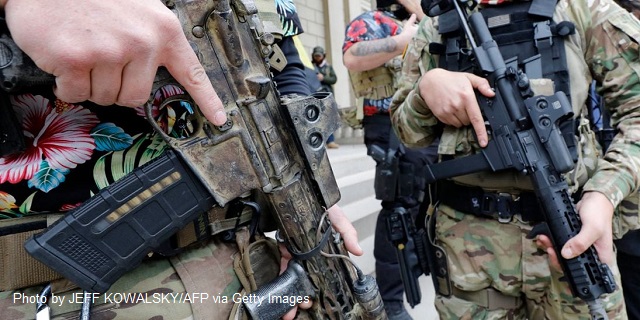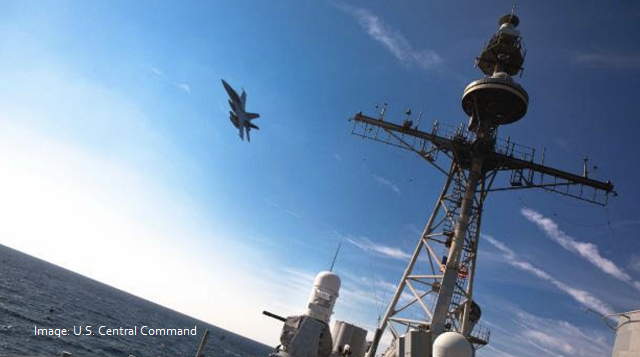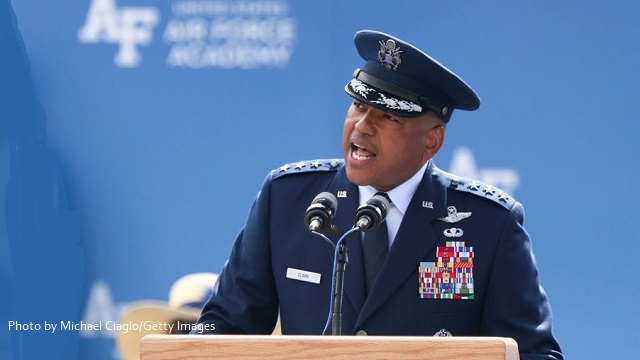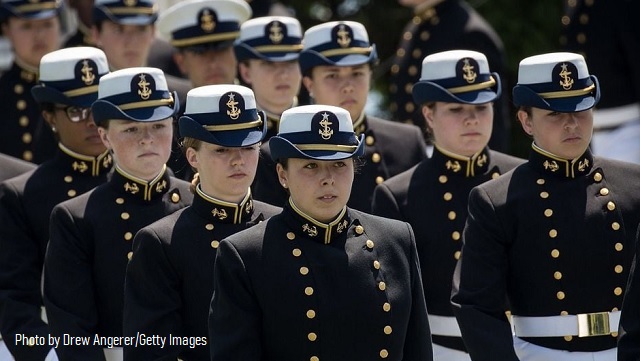
- Gen. Mark Milley retired Friday after serving four years as the chairman of the Joint Chiefs of Staff under both presidents Donald Trump and Joe Biden.
- Some view Milley as an upstanding adviser and protector of democracy, but many conservative leaders deride him as a political actor too willing to make his views on controversial progressive policies known.
- “It’s his nature to pitch into a fight if he sees one going on,” retired Lt. Col. Thomas Spoehr, who served with Milley in the Pentagon, told the Daily Caller News Foundation.
Gen. Mark Milley retired Friday after serving four years as the top military adviser to the president and the secretary of defense. He is perhaps the most well-known individual to ever serve as chairman of the Joint Chiefs of Staff, a development that seems likely to color his legacy for years to come.
Milley’s term was punctuated with crises: the Afghanistan withdrawal, nuclear tensions with Iran and North Korea, defense of Taiwan and Ukraine against would-be conquerors, and domestic turmoil. While some venerate Milley as an American hero who shepherded democracy through a chaotic administration turnover, many conservatives deride him as a political actor who obediently went along with the Biden administration’s progressive agenda.
“General Milley destroyed the U.S military’s 250-year tradition of staying above partisan politics. That’s his legacy,” Republican Rep. Jim Banks of Indiana, a Navy reserve veteran who serves on the Armed Services Committee and leads the House Anti-Woke Caucus, told the Daily Caller News Foundation.
Milley was a brash, combative former special operations officer with strong opinions informed by his four decades of experience in the Army and his deep affinity for history and literature, retired Lt. Col. Thomas Spoehr, who served with Milley in the Pentagon, told the DCNF.
Former President Donald Trump, who appointed Milley as chairman, is thought to have appreciated Milley’s machismo and appearance as the general’s general.
“He kind of really seemed to have a warrior’s mentality. He was clearly an officer who wasn’t afraid to say what he thought. Or so it seemed,” retired Maj. Chase Spears, a former Army public affairs officer, told the DCNF.
The DCNF spoke to multiple current and former officials who served alongside Milley as well as several military experts to form a fuller picture of the former chairman’s tenure. Milley, through a spokesperson, did not respond to questions.
As chairman, Milley’s job was to advise the president and the secretary of defense on national-security threats and operations abroad and maintain military communication channels with friends and adversaries.
“Sometimes, that advice would be misinterpreted or purposely used by others for political purposes despite trying very hard to avoid politics,” Col. Dave Butler, Milley’s spokesman, told the DCNF.
Yet, Milley has shown willingness to delve into political fights and mud sling when it suits him, experts told the DCNF. In his farewell speech, Milley said the military does not answer to a “wannabe dictator,” which many interpreted as a jab at former President Trump.
In a June 2021 House Armed Services Committee hearing, Milley gave a full-throated defense of the Biden administration’s budget request for funding to purge “domestic extremists” from its ranks.
“There is no room in uniform for anyone who doesn’t subscribe to the values of the United States of America,” Milley said during the hearing.
Milley himself seemed to be aware of how he was being perceived. Speaking in November 2021 before the House Select Committee to Investigate the January 6th Attack on the U.S. Capitol, Milley lamented that he had “become a lightning rod for the politicization of the military,” targeted by both Republicans and Democrats, the transcript shows.
“It’s his nature to pitch into a fight if he sees one going on,” Spoehr told the DCNF.
Some congressional Democrats criticized Milley for defending the strike that killed Iranian Gen. Qassim Suleimani, leader of Iran’s elite Quds Force in January 2020, according to CNN.
Then, Milley was blasted by Republicans when he apologized for having joined Trump in a march across Lafayette Square after the square had been cleared of people protesting the killing of George Floyd in 2020. Milley said he did not mean to give the impression the military had taken sides in a political fight.
Elaine Donnelly, president of the Center for Military Readiness, called Milley’s apology video “self-serving.”
The apology proved the first major incident in a trend lasting for the next four years of his career through two politically opposed administrations. Milley would often project disdain for interfering in politics, but then make exceptions in crisis situations or to defend core military values.
Milley “tried his hardest to actively stay out of politics,” but if extraordinary events demanded he step in, “so be it,” an unnamed official told CNN in July 2021.
Perhaps Milley’s most politically perilous moment came after he admitted holding two calls with his Chinese counterpart in October 2020 and January 2021 during the tumultuous administration handover. Lawmakers hammered Milley for his actions months later during a September 2021 hearing. Milley defended his actions as apolitical and in the interest of national security.
“I firmly believe in civilian control of the military as a bedrock principle essential to the health of this republic, and I am committed to ensuring the military stays clear of domestic politics,” he told Congress.
This was a refrain he would reiterate time and time again.
“He’s been saying those things for as long as I’ve known him. And I do think he’s true to those words,” said Spoehr.
‘A Tight Rope To Walk’
Others have pointed to Milley’s willingness to defend social policies in the military and to comment on broader trends in society as undermining the very norm of the apolitical military he claims to embrace.
Milley showed himself “willing to wade into topics that many including myself would argue are beyond the scope of the Joint Chiefs,” said Spears, the former Army public affairs officer.
In the days following the Jan. 6 Capitol riots, Milley took it upon himself to “land the plane” as he and other leading national security officials worried the former president was displaying increasingly erratic behavior, Bob Woodward and Robert Costa reported in their book “Peril.”
Woodward and Costa portray Milley’s acts — including convening a “secret” meeting of senior military officials involved in nuclear command and control on Jan. 8 to review the procedures for launching nuclear weapons — as orchestrating the peaceful transfer of power and restraining a rogue president from triggering an international crisis.
In November 2021, Milley told House lawmakers about a January 8 phone call he had with House Speaker Nancy Pelosi, who he described as “quite animated.” During this call, Milley sought to “assure her” of the security of the nation’s nuclear weapons systems.
“It’s clearly recognized that the President and only the President can authorize the launch,” Milley said, “so he, alone, can authorize the launch, but he doesn’t launch alone.”
“Best practice suggests that ‘regular order is your friend,’” Peter Feaver, an expert in civil-military relations who previously taught Milley, told the DCNF. But the military has no role in the democratic transfer of power from one administration to the next, Feaver said.
Many in the media framed Milley’s actions in the latter days of the Trump administration as heroic measures taken to safeguard democracy. Milley “saved the constitution” from Trump, The Atlantic editor Jeffrey Goldberg wrote in a glowing Nov. 2023 profile.
But, the savior of American democracy is not how Milley wants to be remembered.
“He would prefer not to be portrayed in that light,” a senior military official close to Milley told the DCNF.
While the chairman does not have command authority, he does serve at the top of the “chain of communication.” Some experts have argued this can give the chairman undue influence on policymaking.
“There’s a tightrope to walk here,” Bret Devereaux, a military historian who teaches at North Carolina State University, told the DCNF. “He’s expected to speak for the military as an institution and while, as an institution, the military does not have politics, it does have policies. In his capacity as an advisor, he advocates for certain policies.”
Milley repeatedly considered resigning during the Trump administration, according to reports. He felt Trump was “doing great and irreparable harm” to America and “ruining the international order,” according to a copy of the resignation letter included in Susan Glasser and Peter Baker’s “The Divider.” But resigning in protest of a legal policy with which he disagreed would be the “consummate political act,” Milley said, and he never submitted the letter.
“Milley concluded that difficult times do not release him from a duty to uphold those norms and traditions,” said Devereaux. “Milley was put in a situation where those two parts of the oath might conflict. He might have to say that the president himself was the constitutional danger.”
In the end, Milley testified to Congress that he never received an illegal order. Milley also admitted to speaking with reporters, including Woodward, who were working on books about the Trump administration. The former joint chief also said he spoke to Leonning and Rucker, for their book, and to Michael Bender, for his.
Milley’s expansive media presence “comes with some clear downsides since it means he becomes part of many stories that he probably could have stayed out of, or at least minimized,” Feaver explained.
“I don’t think that served him well. I don’t think it served the country well, for him to be talking to those guys,” Spoehr added.
‘White Rage’
Milley may also not have been served well by his outspoken defense of “woke” Biden administration defense policies and his willingness to wade into the culture wars.
“I want to understand white rage, and I’m white, and I want to understand it,” Milley said, deflecting criticism of Critical Race Theory being taught at West Point, during the June 2021 hearing. “What is it that caused thousands of people to assault this building and try to overturn the Constitution of the United States of America? What caused that? I want to find that out.”
Republicans in Congress who see CRT as antithetical to American values derided Milley.
“That was a partisan political question, framed in a particularly partisan way, and so he could have and should have deferred to the political figure on his side of the hearing table,” Feaver said.
In a CNN interview on Sept. 17, just weeks before his retirement, Milley pushed back against assertions the military had gone “woke.”
“The military is a lot of things, but woke, it’s not,” Milley said. “So I take exception to that. I think that people say those things for reasons that are their own reasons, but it’s not true. It’s not accurate. It’s not a broad-brush description of the U.S. military as it exists today.”
When Republican Sen. Tommy Tuberville held up military promotions in opposition to a new Pentagon policy facilitating abortion access, Milley elaborated on the detrimental impact it could have on military readiness. But he declined to comment on the policy itself.
“I don’t want to enter into the whole discussion of abortion and the culture war. I’m staying out of all that,” he told the Washington Post.
The accusation of wokeness “certainly wasn’t something that we expected to have to deal with,” Butler, Milley’s spokesman, told the DCNF. “We did not expect that to be a new issue brought up by Congress or anybody else.”
Nor does the chairman have time to spend focusing or advising on internal personnel policies when he has global crises to attend to, Butler said. Butler estimated Milley spent 13 hours each day on external threats and operations, and maybe one on other issues.
‘Some Very Difficult Dives’
Just two months after the “white rage” comment, Milley would be dealing with a catastrophe abroad.
Afghanistan collapsed amid the U.S. military withdrawal much faster than administration analysts expected. Both Trump and Biden sought to wipe out the military’s footprint in Afghanistan and end the war. But they planned for the Afghan army to resist the Taliban. It didn’t.
At the September 2021 Senate Armed Services Committee hearing, Milley echoed Republican Sen. Thom Tillis of North Carolina in calling the Afghanistan evacuation “a logistical success, but a strategic failure.”
Milley did not explicitly describe conversations with the presidents, but he made it easy to deduce both Biden and Trump had resisted his “best military advice” to maintain a contingent of American troops in Afghanistan. Military leaders’ advice to Biden in the lead-up to the withdrawal had not changed from the previous fall, and that his opinion was to keep 2,500 troops in country. He had also pushed back on a signed order directing a full withdrawal by January, according to his testimony. Trump rescinded the order.
“Based on my advice and the advice of the commanders, then-Secretary of Defense Esper submitted a memorandum on 9 November, recommending to maintain U.S. forces at a level between about 2,500 and 4,500 in Afghanistan until conditions were met for further reductions,” Milley said in his testimony.
A national security official close to the situation told the DCNF that Milley repeatedly warned Biden “of the risks of a poorly-timed withdrawal by recounting details from the chaotic 1975 Saigon evacuation.” in the hours before the president announced his decision in April 2021.
Likewise, Milley saw Russia’s February 2022 invasion of Ukraine coming, The New York Times reported. He is blunt and level-headed in his assessment of Russia’s capabilities and Ukraine’s challenges — and he has often proven correct, according to Spoehr.
“He’s been a very good chairman,” Spoehr told the DCNF.
As Milley closed out his career, high-level military communication between the U.S. and China, America’s greatest competitor, had been stalled for more than a year. The war between Russia and Ukraine shows no signs of abating. And his successor, Air Force Gen. C.Q. Brown, faces the same culture war pressures.
Military leaders should be judged like Olympic divers, “taking into account the difficulty of the dive they have to do,” Feaver told DCNF. “Circumstances have conspired to force General Milley to do some very difficult dives. Even though he has kicked up some splash that does not necessarily mean he has under-performed.”
AUTHOR
Investigative reporter, defense.
RELATED ARTICLE: China Is On The Fast Track To Wage War Against Taiwan — And The US, Experts Say
EDITORS NOTE: This Daily Caller column is republished with permission. ©All rights reserved.
All content created by the Daily Caller News Foundation, an independent and nonpartisan newswire service, is available without charge to any legitimate news publisher that can provide a large audience. All republished articles must include our logo, our reporter’s byline and their DCNF affiliation. For any questions about our guidelines or partnering with us, please contact licensing@dailycallernewsfoundation.org.












